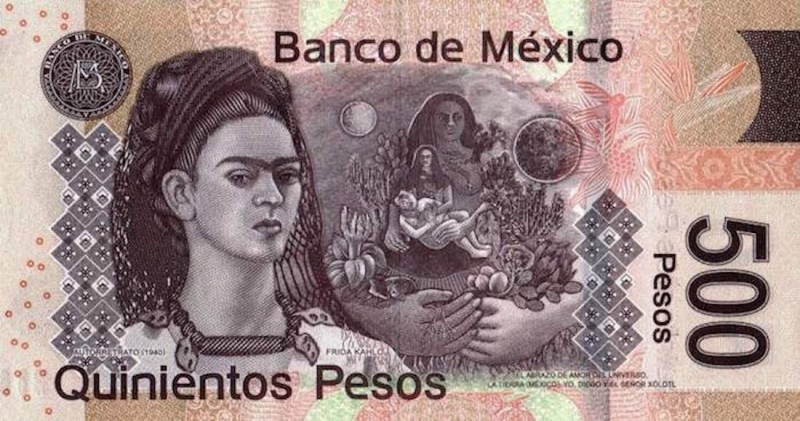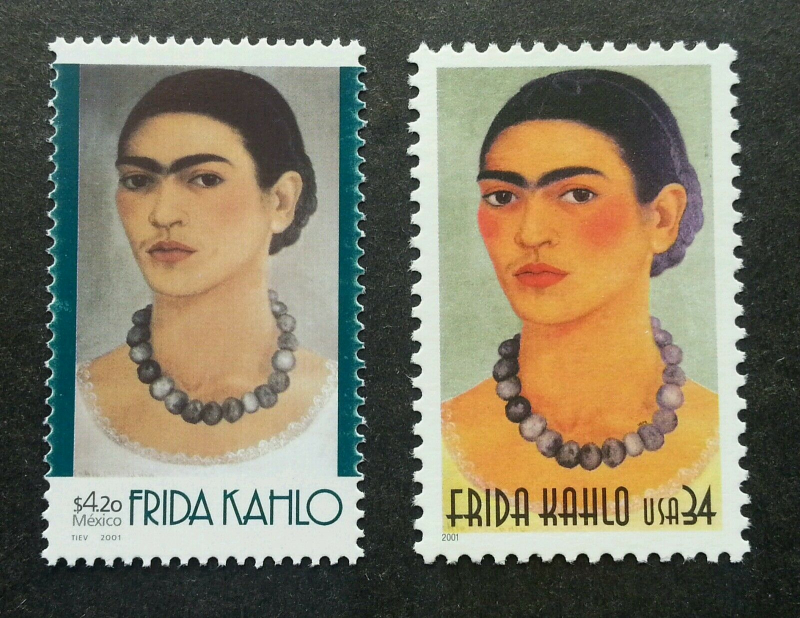Her fame grew a couple of decades after her death
She spent a long time living in her husband's shadow, but her nomination to the Seminario de Cultura Mexicana in 1942 attests to the fact that she was acknowledged by governmental organizations. The government established the Seminario de Cultura Mexicana, a collection of well-known figures from the cultural world, to promote Mexican culture through publications, seminars, and exhibitions. Besides, her Blue House was opened as a museum in the year of 1958.
The Mexican Federal Bank decided to adorn one side of a new 500 peso note in 2010 with her image and the other with Diego Rivera's. Frida Kahlo was the first Hispanic woman to be featured on a US postage stamp, which was another historic first. Her 1933 self-portrait with the necklace was featured on the stamp, which was published on June 21, 2001. On the same day, the Frida stamp was also released by the Mexican Postal Service. In addition to being a landmark in the history of art, the Chicano movement, which fought for the civil rights of Mexican-Americans, adopted it as policy in the 1990s.
Her art also didn't receive widespread praise until a few years after she passed away. In the 1970s, her renown expanded, and by the 21st century, it had reached what some reviewers dubbed "Fridamania." Her iconic painting, Two Nudes in a Forest, which sold for $8 million in 2016, is just one example of how her work's worth has increased over the years. Kahlo's life and work have been the subject of several articles, books, and films, including the best-selling Frida: The Biography of Frida Kahlo (1983) by Hayden Herrera. In 1983, the film "Frida, Naturaleza viva" was released and was a tremendous hit. Salma Hayek portrays Frida in the 2002 biographical picture "Frida," which also made over $50 million worldwide and won two Academy Awards.













